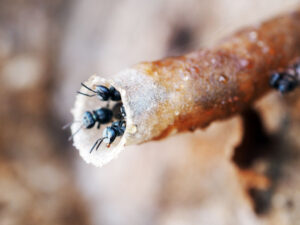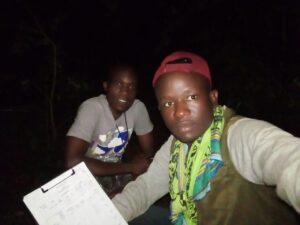By Tilana De Meillon
The journey began by attending a Dudu Walk with the Insect Committee of Nature Kenya in November, and I was ecstatic to see that it was not focused on creepy crawlies but rather on encountering, identifying, and learning more about butterflies and moths! It started off slow as the day was overcast, but within half an hour, having learnt about wood whites, blues, and pansies, I was hooked, especially because I have always wanted to learn more about these beauties. I promptly obtained an identification guide and started walking around the house, trying to identify some of the butterflies in the garden.
Then…I found a caterpillar on my lemon tree growing in a pot on the verandah, and I decided to see if I could raise a butterfly. I put it into a large glass jar but soon realised that it was hard work to ensure an ample supply of fresh host plant material to raise it through all the instars. The leaves wilted so quickly. My energy surged every time it molted and changed so completely through the four instars (at least that is how many I counted). Before I knew it, the caterpillar was a pupa, and then the wait… Just before I gave up and thought it was surely dead, the most beautiful Citrus swallowtail butterfly emerged!
And then I saw another caterpillar on the lemon tree, and the whole process restarted…
The entire process of metamorphosis is an amazing phenomenon to witness, and much can be learned through careful study and observation.
What I learned
During the earliest instars, the caterpillar mostly stays on the host plant; they don’t necessarily need to be in the jar or tank at this early stage. However, beware: if you sleep too late, it may walk away never to be seen again (unless perhaps as a butterfly flying around in the garden).
It goes by quickly, and before you know it, the caterpillar becomes a pupa. Then, it feels like ages before the butterfly emerges. It takes around three weeks to reach the pupa stage and another three weeks until the butterfly appears.
Place several twigs upright or tilted inside the bottle. This offers additional spots for the larva to pupate and for the newly eclosed butterfly to cling to. Keep the jar or tank in a bright area but avoid direct sunlight, as this can significantly increase heat and create a harmful environment for the caterpillar.
These delicate creatures possess soft bodies and permeable skin, making it easy to inadvertently harm them. Minimize handling.
The butterfly, upon emergence, expands its wings to their full size and shape. However, the wings then need to dry and harden before it can fly. During this period, the butterfly must hang onto something unobstructed; it cannot successfully expand its wings on a flat surface.
These wonderful creatures, these ‘jewels on the wing’, symbolize everything that is beautiful and free in nature. Raising and releasing a healthy, vigorous butterfly is truly a cause for celebration!


